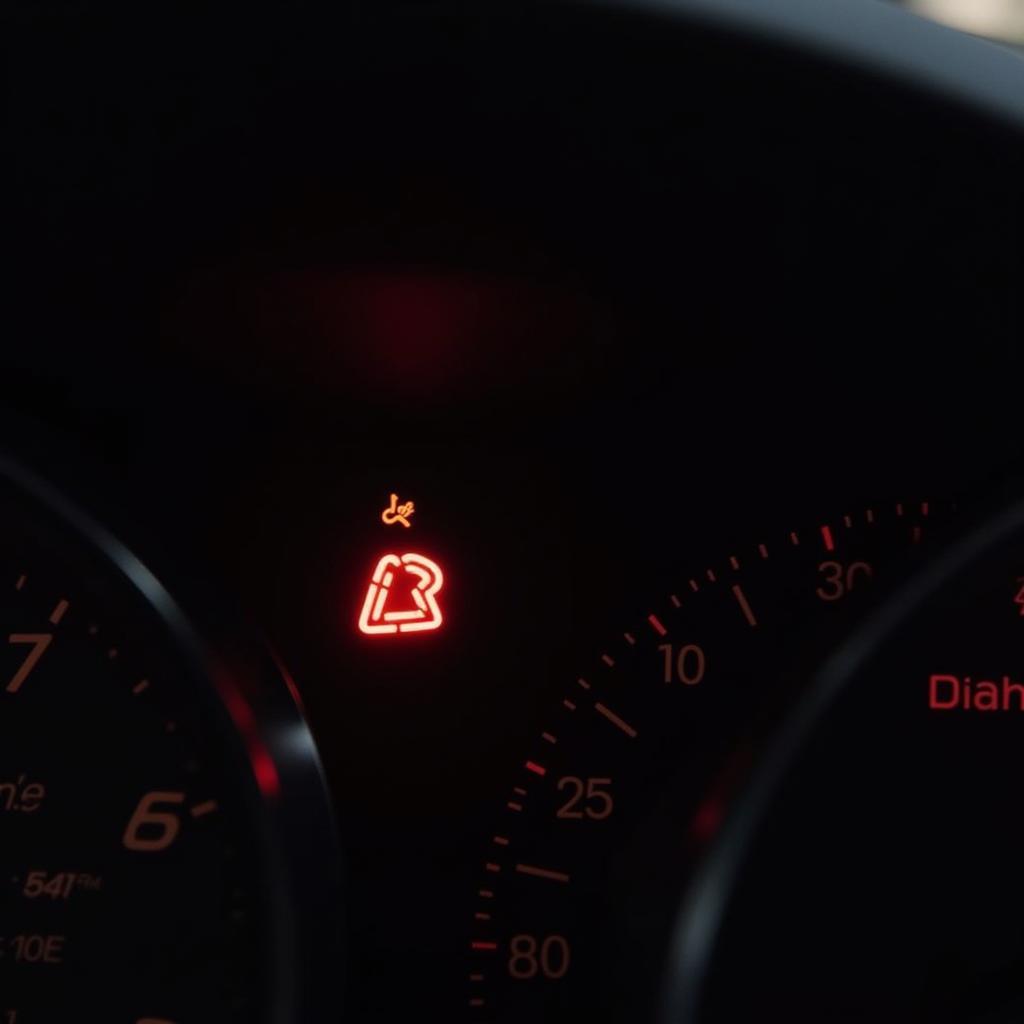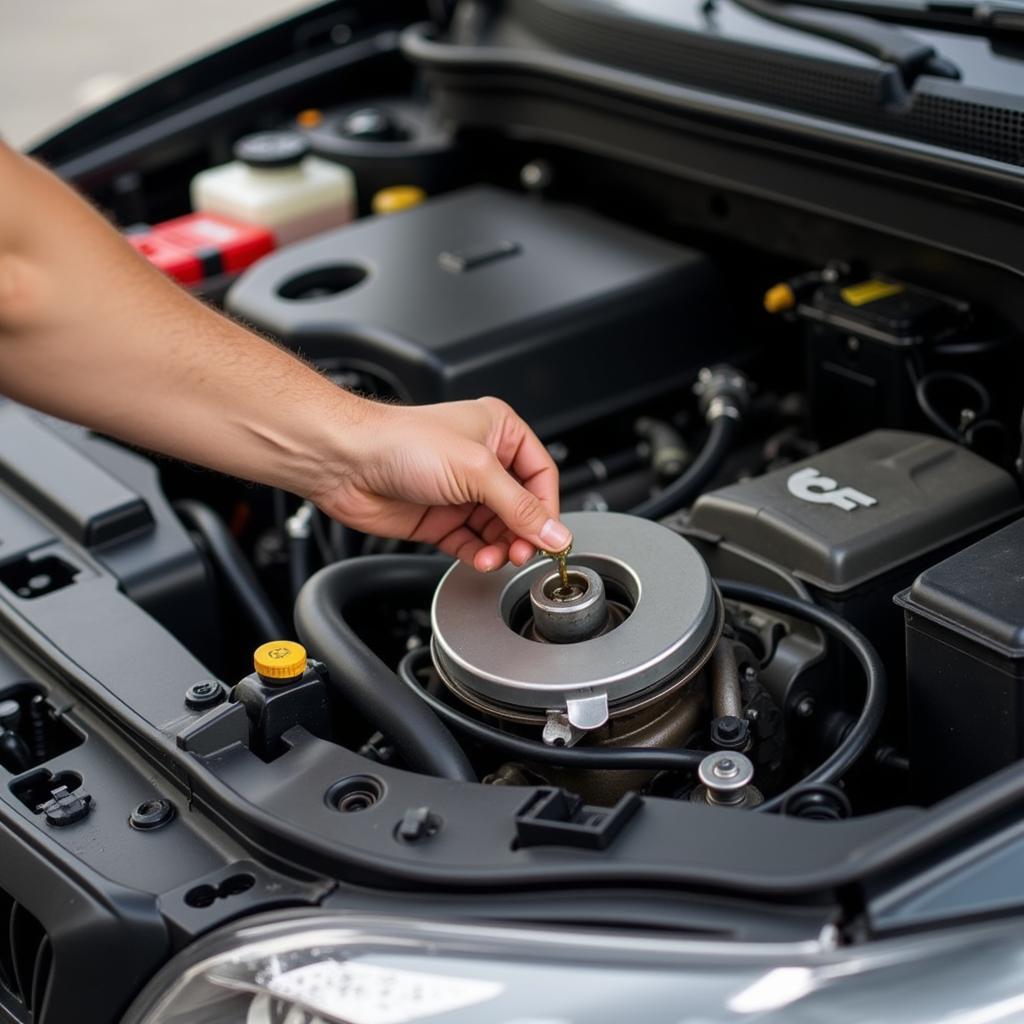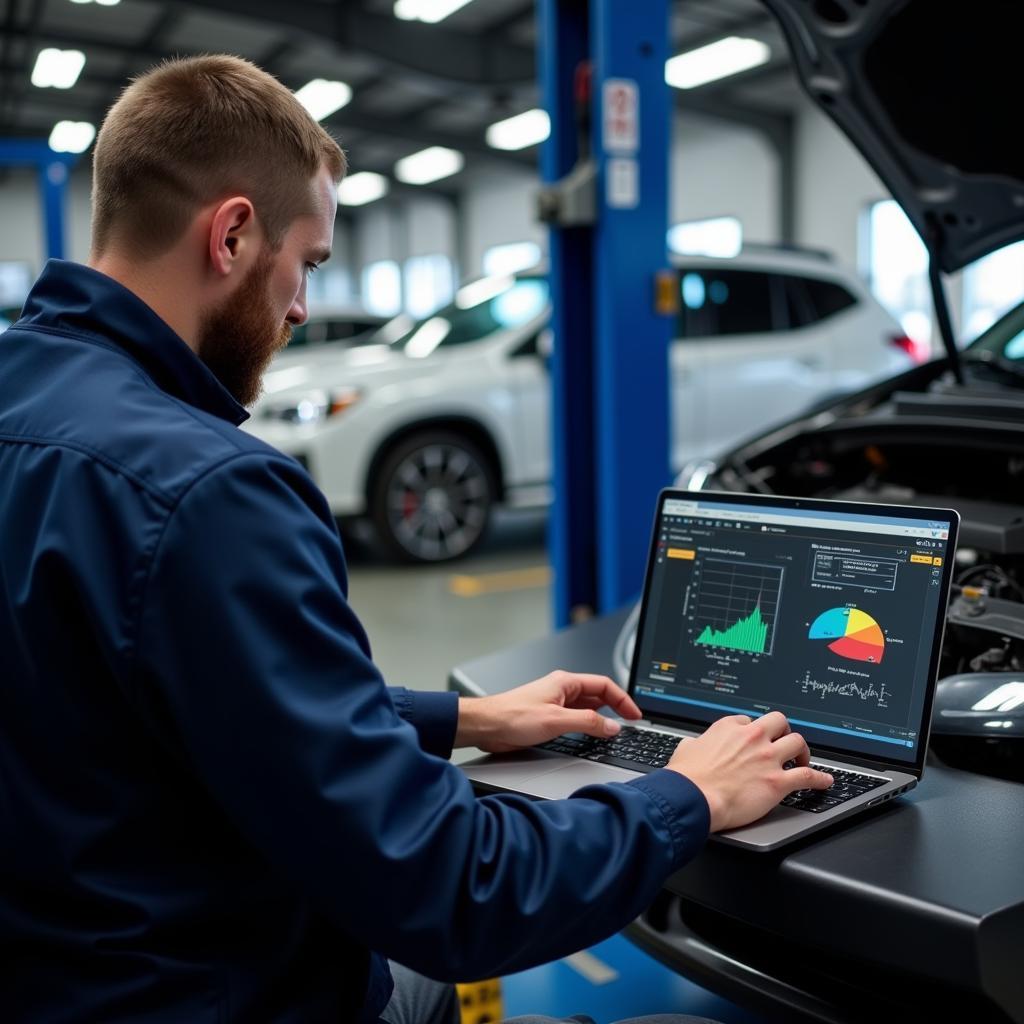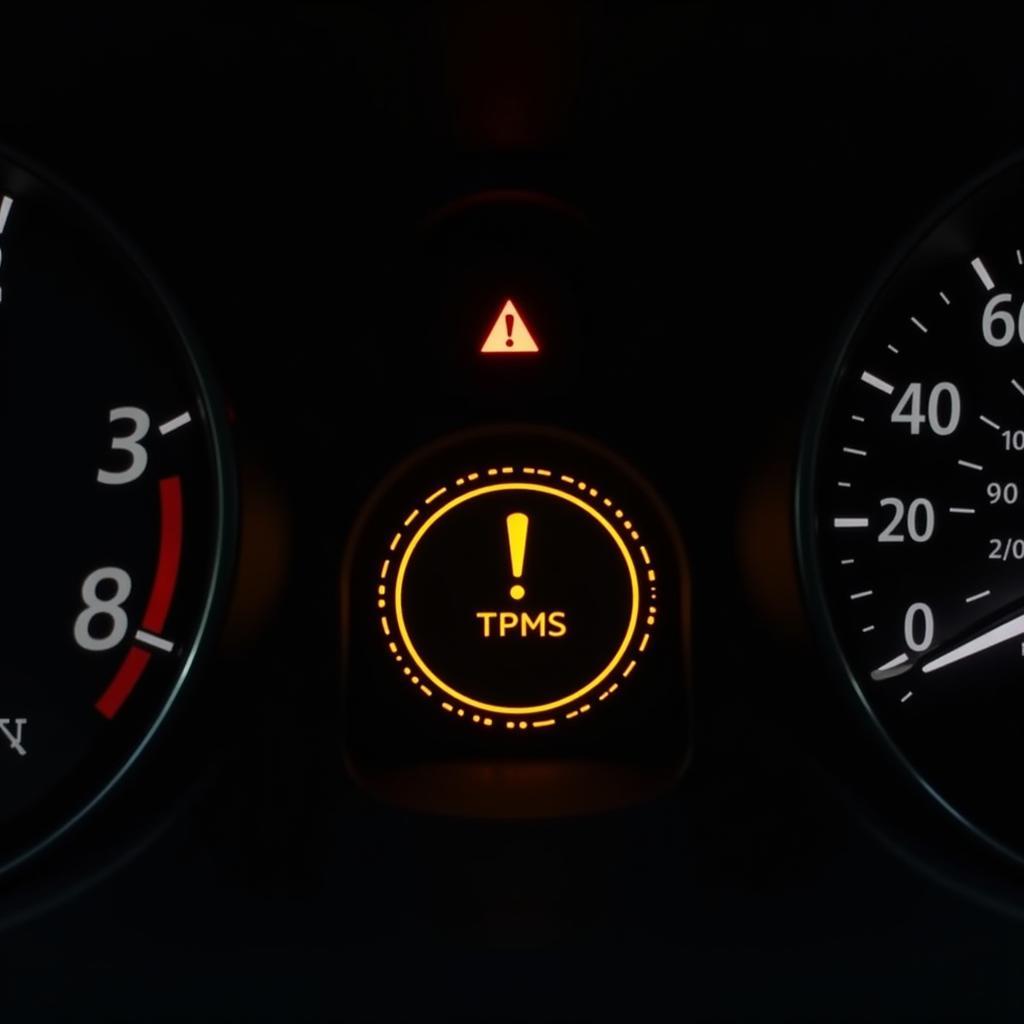The illumination of a brake warning light on your dashboard is a clear signal that requires your immediate attention. While it can be a nerve-wracking experience, understanding the different brake warning light symbols can help you determine the urgency and nature of the issue. This comprehensive guide will delve into the common brake warning light symbols, their potential meanings, and how remote diagnostics can offer swift solutions.
 Brake Warning Light Illuminated on Car Dashboard
Brake Warning Light Illuminated on Car Dashboard
Common Brake Warning Light Symbols and Their Meanings
Modern vehicles often employ a variety of brake warning light symbols to indicate specific issues within the braking system. Here are some of the most common symbols and their potential interpretations:
1. Red Exclamation Mark (!) Within a Circle
This symbol typically represents a malfunction within the Anti-lock Braking System (ABS). The ABS prevents wheel lockup during hard braking, ensuring steering control.
What it could mean:
- Faulty ABS wheel speed sensor
- Malfunctioning ABS module
- Issue with the ABS control unit
What to do:
While your vehicle may still brake without ABS, it’s crucial to have the system diagnosed and repaired by a qualified technician, especially if you’re experiencing other unusual braking behavior.
2. Yellow or Amber Circle with Parentheses and Exclamation Mark (!)
This symbol represents a malfunction within the Electronic Stability Program (ESP) or Electronic Stability Control (ESC). These systems help maintain vehicle stability and prevent skidding, especially on slippery surfaces.
What it could mean:
- Faulty steering angle sensor
- Problem with the yaw rate sensor
- Issue with the hydraulic unit
What to do:
Similar to ABS issues, it’s crucial to have the ESP/ESC system addressed by a professional. Driving with a compromised ESP/ESC can increase the risk of losing control, particularly in challenging driving conditions.
3. Red Circle with “BRAKE” Inscription
This symbol is the most common and alarming brake warning light. It generally indicates one of two critical issues:
- Parking Brake Engaged: This is the most benign scenario, indicating that you may have forgotten to disengage your parking brake fully.
- Low Brake Fluid Level: This is a serious concern, suggesting a leak in your braking system or severely worn brake pads.
What to do:
If the parking brake isn’t the culprit, stop driving immediately and check your brake fluid level. If it’s low, it’s crucial to have your vehicle towed to a trusted mechanic to diagnose and address the underlying issue.
 Checking Brake Fluid Level
Checking Brake Fluid Level
The Role of Remote Diagnostics in Brake Repair
In today’s digitally connected world, remote diagnostics is revolutionizing car repair, offering a swift and efficient solution for brake-related issues.
-
Rapid Issue Identification: Remote diagnostics can often pinpoint the root cause of the brake warning light, eliminating the need for time-consuming physical inspections.
-
Software-Related Solutions: Many modern braking systems rely heavily on software. Remote diagnostics can identify and rectify software glitches through over-the-air programming, often resolving the issue without requiring a physical visit to a repair shop.
-
Convenient and Time-Saving: Remote diagnostics eliminates the need to take your car to a mechanic and wait for a diagnosis. It allows for swift troubleshooting from the comfort of your home or office.
When to Seek Immediate Professional Help
While remote diagnostics can be invaluable, some brake issues necessitate immediate professional attention. If you experience any of the following, stop driving and seek help:
- Soft or Spongy Brake Pedal: This indicates a loss of hydraulic pressure in the braking system, potentially caused by a leak.
- Grinding Noise When Braking: This usually signifies severely worn brake pads that need immediate replacement.
- Pulling to One Side When Braking: This can indicate uneven brake pad wear, a stuck caliper, or a problem with the hydraulic system.
 Mechanic Performing Remote Diagnostics on a Car
Mechanic Performing Remote Diagnostics on a Car
Conclusion
Understanding your vehicle’s brake warning light symbols is paramount for safe and responsible driving. While some issues might be minor, others, like low brake fluid, demand immediate attention.
Remember, modern technology, like remote diagnostics, can offer quick and efficient solutions for many brake-related problems. However, never hesitate to seek professional help if you’re unsure about the severity of the issue or experience concerning symptoms while driving.
By staying informed and proactive, you can ensure the optimal performance of your braking system and, most importantly, your safety on the road.

